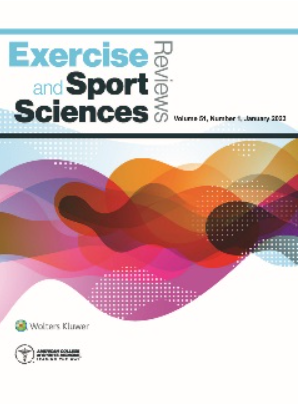针对大脑老化的有氧运动训练:有效剂量和血管机制。
IF 4.7
2区 医学
Q1 PHYSIOLOGY
引用次数: 0
摘要
本文提供的证据支持了这样一个假设:与晚年开始锻炼相比,成年早期开始有氧运动并坚持终生锻炼会带来显著的神经认知益处。中年时期定期进行中等至剧烈强度的有氧运动与心肺功能的显著改善有关,而心肺功能的改善可能会创造一个有利的大脑微环境,通过增强血管功能促进神经可塑性。本文章由计算机程序翻译,如有差异,请以英文原文为准。
Aerobic Exercise Training for the Aging Brain: Effective Dosing and Vascular Mechanism.
This article presents evidence supporting the hypothesis that starting aerobic exercise in early adulthood and continuing it throughout life leads to significant neurocognitive benefits compared with starting exercise later in life. Regular aerobic exercise at moderate-to-vigorous intensity during midlife is associated with significant improvement in cardiorespiratory fitness, which may create a favorable brain microenvironment promoting neuroplasticity through enhanced vascular function.
求助全文
通过发布文献求助,成功后即可免费获取论文全文。
去求助
来源期刊

Exercise and Sport Sciences Reviews
社会科学-生理学
CiteScore
10.70
自引率
1.80%
发文量
72
期刊介绍:
Exercise and Sport Sciences Reviews made the transition from an annual hardcover series book to a quarterly journal in January 2000. The mission of this American College of Sports Medicine publication is to provide premier quarterly reviews of the most contemporary scientific, medical, and research-based topics emerging in the field of sports medicine and exercise science. The publication strives to provide the most relevant, topical information to students, professors, clinicians, scientists, and professionals for practical and research applications.
 求助内容:
求助内容: 应助结果提醒方式:
应助结果提醒方式:


